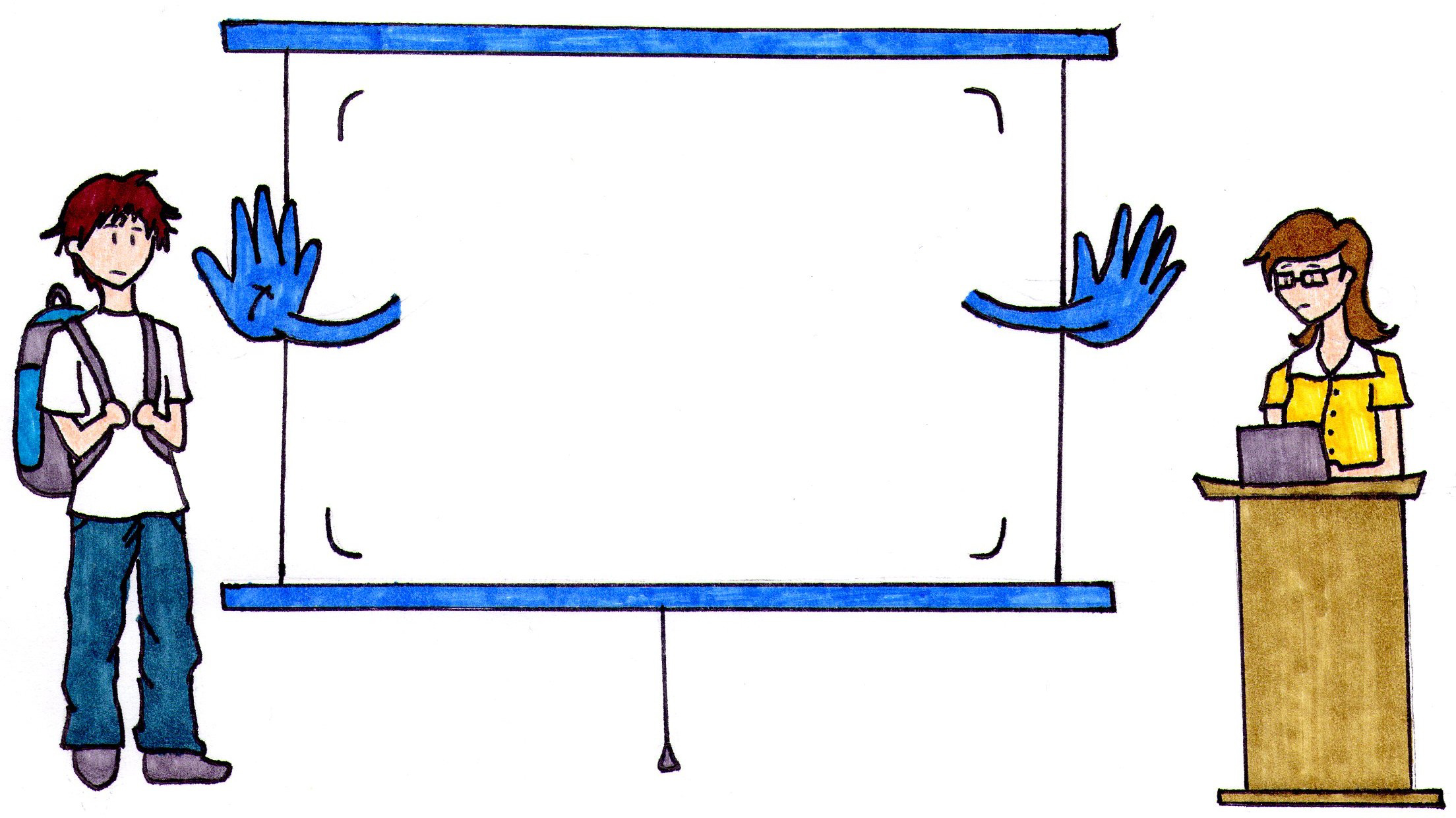We have come to exist in a society and culture that is rapidly changing through technological innovation.
This innovation, which has left its mark on medicine and labor, has now moved on to the educational frontier.
Yet technology can either raise the educational standard in this country, or destroy it completely.
Technology has become more and more prevalent in college classrooms nationwide. According to the National Center for Education Statistics, 98 percent of all classrooms had internet availability in 2008, compared to the 77 percent that had internet access in 2000. The once highly confusing PowerPoint presentation has now become a staple of nearly every lecture.
Newer gadgets such as interactive white boards, Kindles and iPads are impressive technological feats, but they steal the role of educator away from the teacher.
A distinction must be drawn between technology that is used to aid an instructor in teaching, and technology that essentially takes the place of a teacher. The increasing reliance on technology will inevitably replace the teacher as the main educational facilitator.
What was once a tool used by teachers to supplement lesson plans is now being used as a crutch. No matter how advanced technology becomes, it should never substitute personal connection between teacher and student.
Ancient Greeks defined this sentiment ““ some of the wisest philosophers emerged from an age of solely teacher and student interaction. Computers can only teach in one way, and are unable to adapt to a student’s strengths and weaknesses.
This is what makes teachers invaluable ““ their capability to help a student reach their full potential through a human relationship.
We must also examine a second issue, whether or not these technologies are actually aiding students in understanding the material better than a teacher alone. Just because new advancements are available does not mean we need to utilize all of them, and it does not mean all of them are beneficial to our education.
At UCLA, professors have been known for posting questions on their PowerPoint slides that can be answered with clickers, posting review questions during class and even providing students a video podcast to review lectures. This type of technology allows for interactive learning, yet does not minimize the role of the professor.
At institutions with large lecture courses, technology can serve as a bridge between educator and pupil. Robert Gould, professor of statistics at UCLA, said that clickers are very useful in large lectures and have the ability to more efficiently allow every student to participate during lecture.
The clickers also lead to lively class discussion and have students feel more involved in the lesson.
Introducing technology to the classroom also runs the risk of taking the attention away from a teacher’s presentation. Allowing students to bring laptops to class because of a new technological implement can lead to numerous distractions ““ in this case technology would only serve to hinder a student’s education.
In 2010, a University of Colorado professor examined the test scores of her students who used laptops in class against those students who do not; the result, students who used laptops during class performed an average of 11 percent lower on the test.
Yet, all technological advancement is not detrimental to education. The most effective way to handle this conundrum is to limit the amount of technology that students are exposed to in the classroom.
Simply put, the teacher should always be the central focus for all educational learning.
This same principle is the reason why websites such as Khan Academy and other online tutorials have become so popular ““ they create a one-on-one feeling between student and instructor.
While universities will continue to provide degrees, students are beginning to turn to other sources, such as the Khan Academy, for an education.
Students’ increasing trust in technology has convinced many they can succeed with technology alone, and without any help from educators.
I do not believe the advent of technology is proof of the devil, but I do believe technology if used correctly can serve to perfect a teacher’s message.
We should embrace technology, but we must be vigilant of how it will be used for educational purposes. Computers cannot teach students, no matter how ardently we wish to believe so.
Teachers are the principal driving force behind a student’s education, and a teacher must learn to balance technology with their own methods in order to educate. If not, then technology threatens to corrupt and destroy education, just as it has destroyed so many other things when utilized incorrectly and lazily.
Do you think technology is becoming too prominent in the classroom? Email Viswanathan at rviswanathan@media.ucla.edu. Send general comments to opinion@media.ucla.edu.
